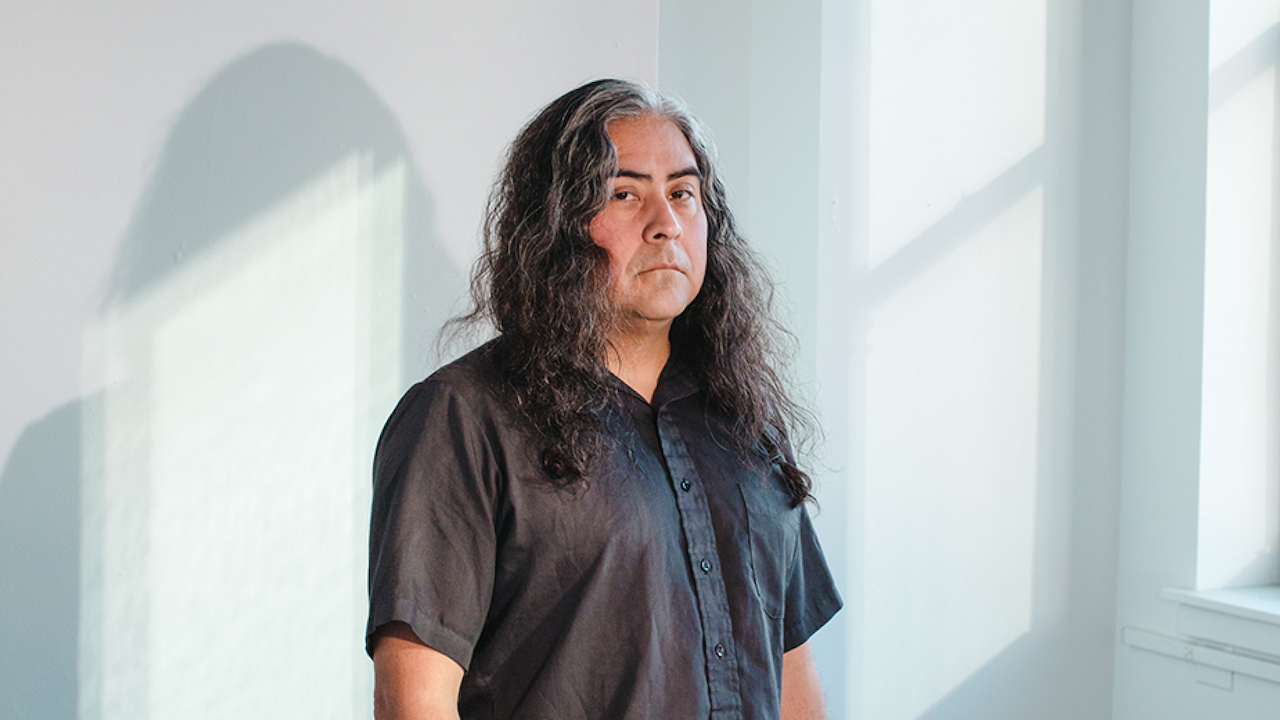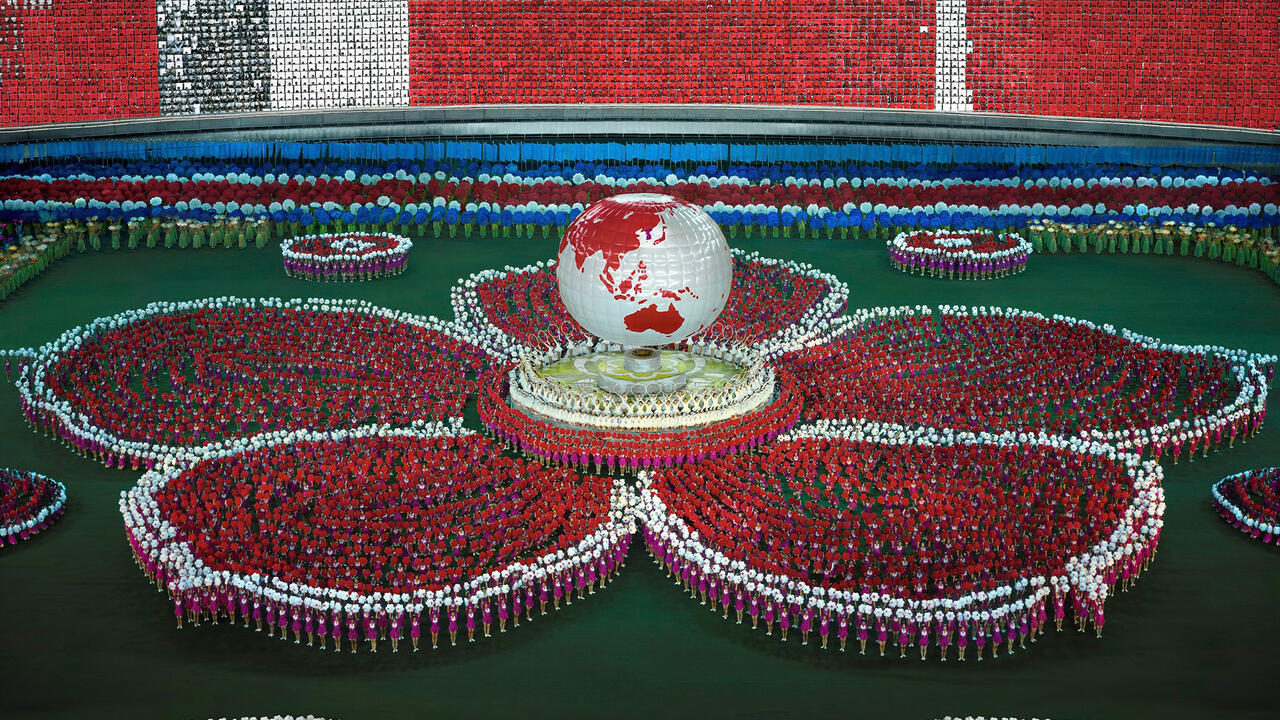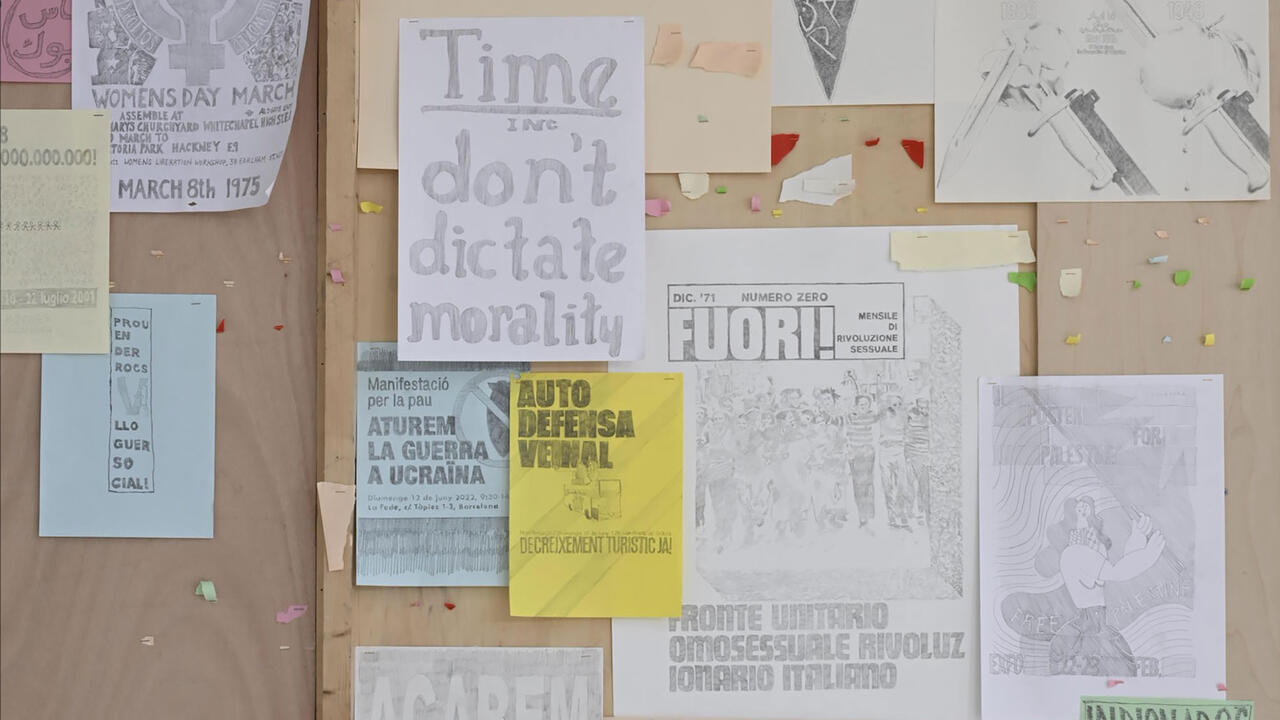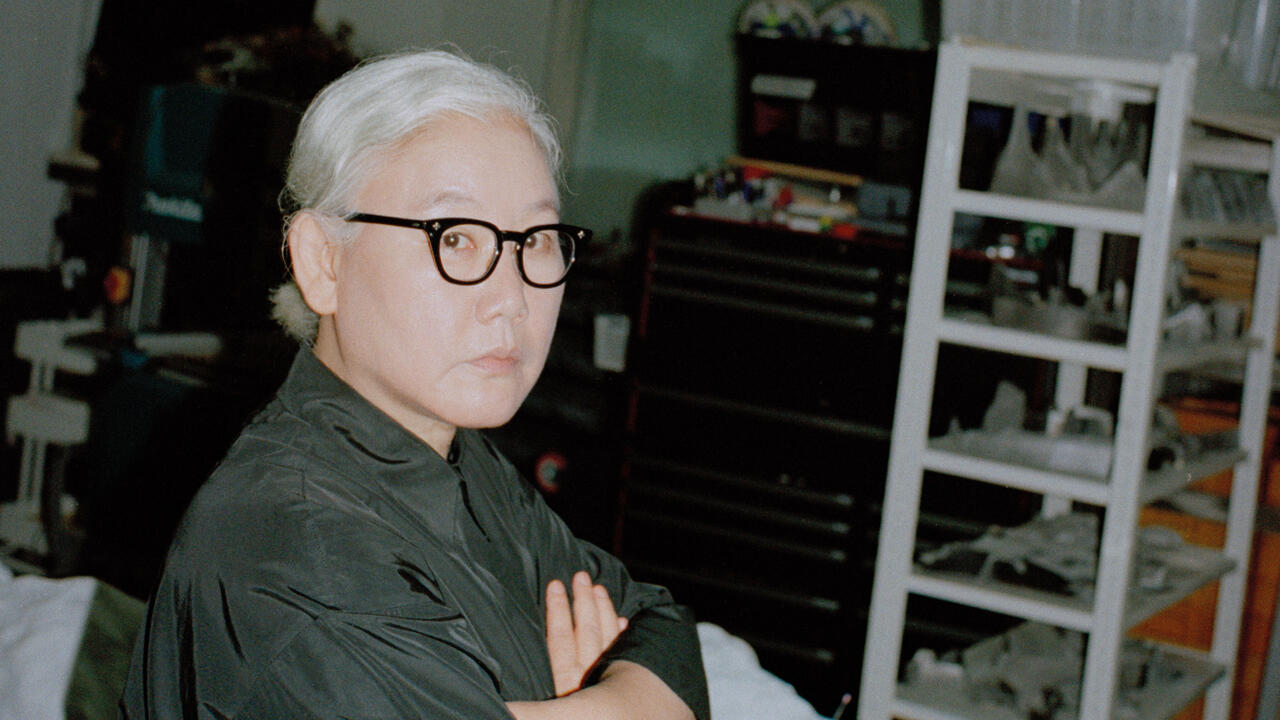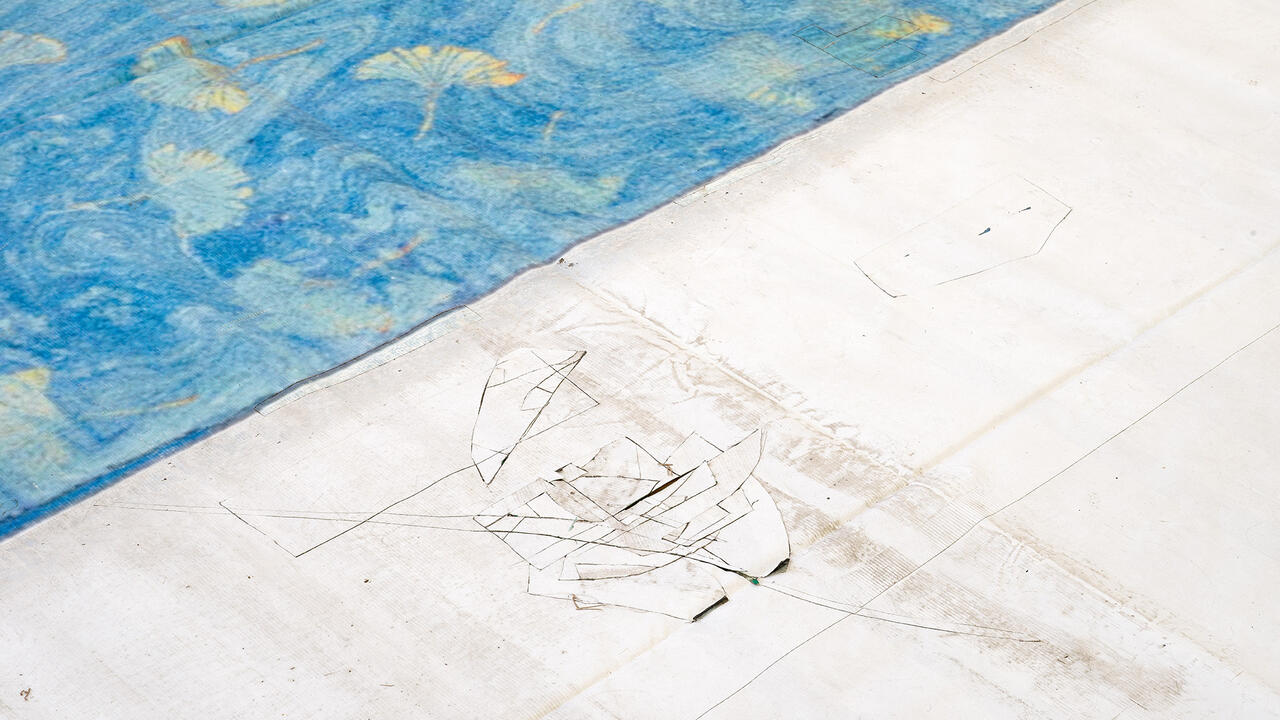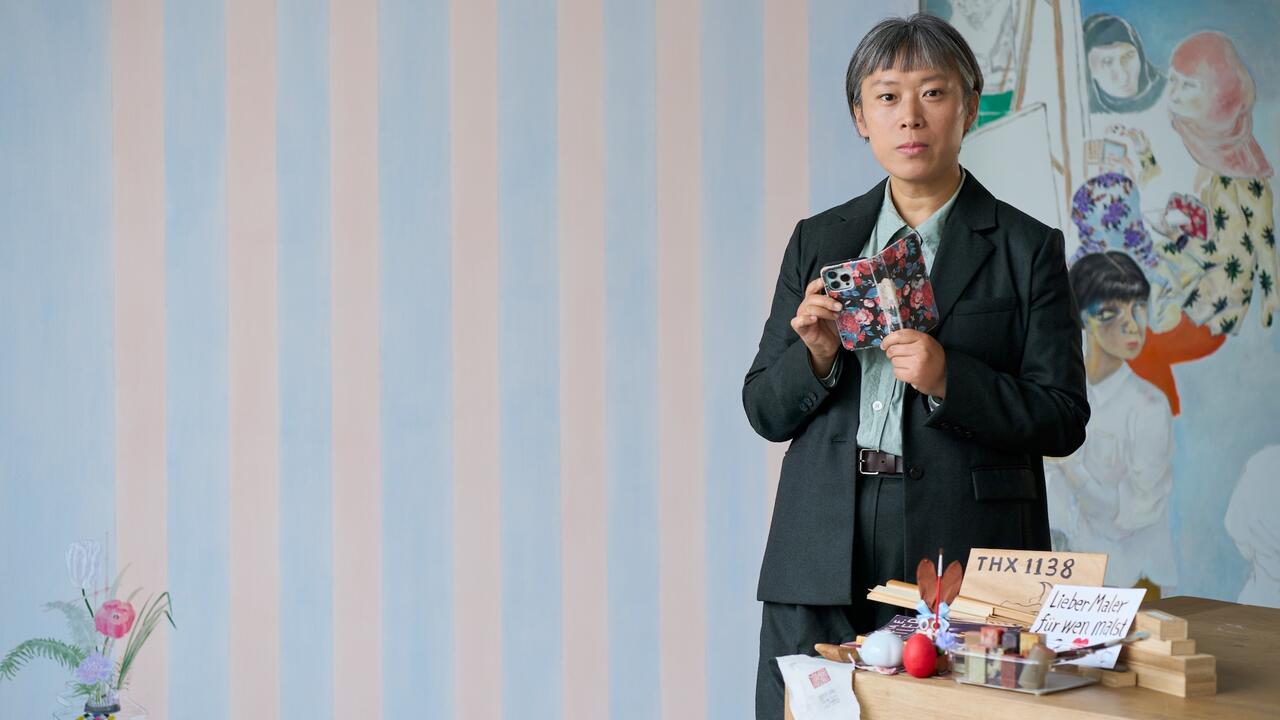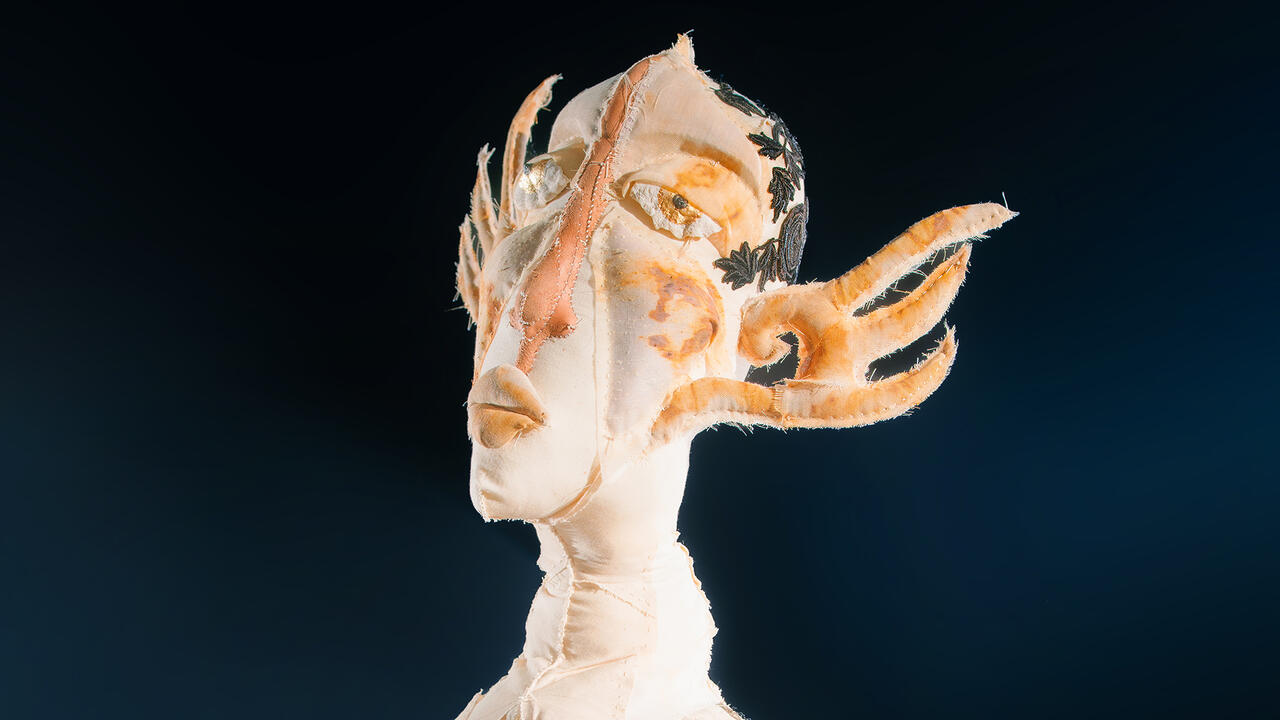Teresa Solar Abboud’s Science of the Senses
On the Spanish artist’s magmatic morphologies, currently on view at Haus der Kunst, Munich, and Matadero, Madrid
On the Spanish artist’s magmatic morphologies, currently on view at Haus der Kunst, Munich, and Matadero, Madrid

In April this year, Teresa Solar Abboud travelled to New Zealand to participate in TBA21–Academy’s ‘Spheric Ocean’, an ambitious field study programme that explored three senses of the ‘oceanic’ – from remote seas to vast scales and the geography of Oceania. The volcanic formations of New Zealand’s Kawau Island made a particularly forceful incursion into the imagination of the Madrid-based artist. ‘It was easy to imagine the formation of this land, the magmatic state of the stone when it erupted, just being liquid land,’ she wrote to me: ‘that instant where there were only two liquids, no solid element’.
Working across sculpture, video, drawing and photography, Solar’s art is itself a magmatic investigation of morphology and sensory manifestation. Lying at the fuzzy interface between physical artist and physical world, Solar’s body of work is full of ligaments in fragile tension – mineral abstractions connect with metaphors of calcification and sediment, shaped earth binds with fossilized bone. The wonder of volatile rock is readily apparent in Pumping Station (2017), Solar’s giant slug-like sculpture that can be seen at Cologne Sculpture Park until June 2019. ‘It is the texture of a brain turning into an animal, speaking of oozing substances coming from the bottom of the earth, a sort of marine deity that is pumping its new flesh out from a pore’, she relished. Yet this realm of fluid divinity and spectacle is often a carrier for more personal and terrestrial narratives in her works.

In a scene from her 2015 film Al Haggara (The Stone), the artist wanders through the Uptown Cairo golf course atop Mokattam, the mountain that rises above the Egyptian capital. ‘The army has so many pieces of land in the city that it seems like a state within another state’, read the film’s Spanish captions: ‘This was what we wanted to create in the studio’. The film cuts between casually shot documentary footage in Cairo and a warehouse studio in Madrid. In this studio, brown paper scenery creates a mock Mokattam, and performers, fabric columns, prop checkpoints and palm tree cut-outs conjure up a surrogate Cairo. ‘In the end what I have are collections of similar things, fragments of history, jolts, doors in the mountain’, read the subtitles of one voiceless sequence in the film.
Solar’s pensive 37-minute film, which premiered in 2016 at Santander’s Fundación Botín, looks for entry points into the lithic narratives of the Cairo mountain that was once mined for pyramid building, while investigating the Egyptian ancestry of Solar’s mother. Mother and daughter search stone gravestones for Abboud’s past, and during a visit to grandmother’s house, we glean that their underlying family name, Haggar, means ‘stone breaker’. Tenth century Saint Simon the Tanner is said to have miraculously levitated Mokattam – accordingly, in the video, the performers and artist elatedly lift the paper equivalent. In the twinning of her ancestors and a mountain in Egypt with sculptural props and action in Spain, Solar urges us that national sovereignty and autobiography, geology and magic, are not alternatives to be juxtaposed, but occupy the same physical space.

In China Miéville’s murder-mystery novel The City & the City (2009) the rival city-states Beszel and Ul Qoma coexist in the same location, the one interpenetrating the other. As if inspired by such fractured mental geography, Al Haggara suggests how we routinely and exceptionally experience our surroundings in a strange theatre of ignorance and collusion. Miéville’s ‘weird fiction’ may well be a more appropriate term for her practice than any traditional notion of Artes Plásticas (the so-called plastic arts) – although a prominent trait of her work of the last five years has involved forming clay.
Solar’s 2017 solo exhibition ‘Ground Control’ at Barcelona’s Galería Joan Prats featured works from her ‘Crushed by pressure’ (2017) series: potter’s-wheel-thrown ceramic forms that are held in tension with elastic cords, or clasped by metal poles as if aberrant prostheses were gripped by outsized chopsticks. Through painted marks on photographs, as well as video and drawing, the artist has directly and indirectly related these and other fleshy pottery accretions to at least three, seemingly disparate, freak moments of rupture: snapping ligaments in her knee during a Roller derby accident in 2016; the bogus hand gestures of sign language interpreter Thamsanqa Jantjie during Nelson Mandela’s memorial in 2013; and the destruction of the space shuttle Columbia in 2003, caused by damage to heat-resistant tiles. Allied to the filmic approach of Al Haggara, here macro and micro, matter and meaning, arrive at temporary congruence and compromise.

As if joining the pantheon of marvels of the ocean and the earth that Solar has mobilized in her art, it is Nut, an ancient Egyptian goddess of the night sky, who presides like an arch over her current exhibition at Matadero Madrid, ‘Cabalga Cabalga Cabalga’ (Ride Ride Ride). Solar has created a sculptural cavalcade with the atmosphere of a gloomy theatre storage or an abandoned theme park. The exhibition is a nocturnal parade of amusement architecture and faux objects: among them, a canoe, an orca merry-go-round part, a half-rainbow doorway and a maimed Curro, the bird-elephant mascot of Seville Expo ’92. The artist has referred to the spectacle of the more than six-hundred vertebrate skeletons at Paris’s National Museum of Natural History as an inspiration, and the comparison is telling.
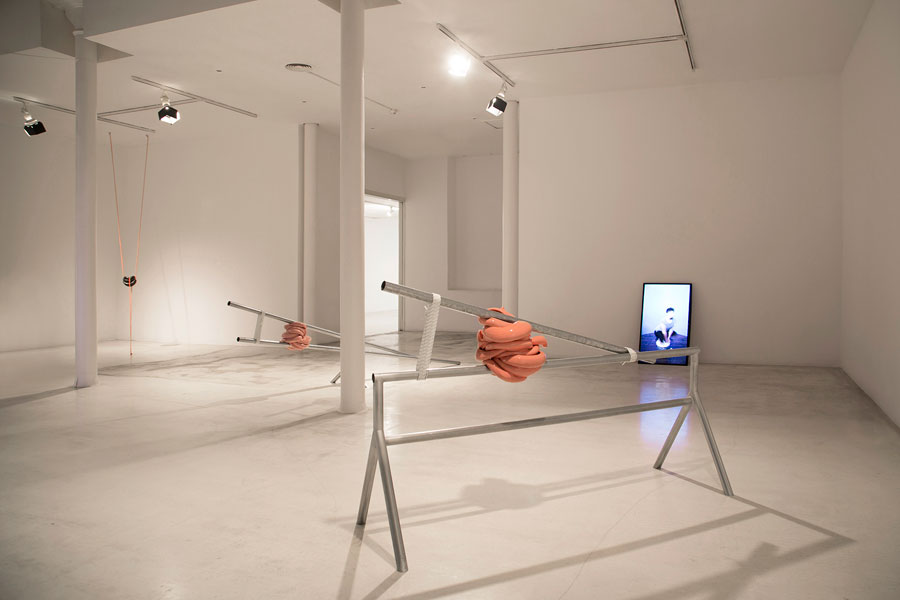
It was the specimens kept here that fuelled one of the great debates of early 19th century evolutionary science. The debate hinged on function, form and causal reality and the possibility of comparative anatomy. Naturalist Étienne Geoffroy Saint-Hilaire believed in an archetypal template of vertebrate form, with modifications being almost incidental. His rival, Georges Cuvier, saw the animal kingdom as four diverging branches, reflecting different body plans that had functionally adapted to different environments. Science, Solar Abboud seems to allude, proceeds by being proven right or wrong. (The weight of evidence for Cuvier’s theory eventually overwhelmed Geoffroy’s increasingly fanciful defence.) With this merry band of gods and monsters at her back, and her knee now back in shape, she vindicates art as a joyous practice of sentient mammals where nothing is anachronistic and nothing is inconceivable.
Teresa Solar Abboud’s solo show at Der TANK, Institut Kunst Hochschule für Gestaltung und Kunst FHNW, Basel, Switzerland, opens on 13 June. She is currently participating in the exhibition ‘Blind Faith: Between the Visceral and the Cognitive in Contemporary Art’, Haus der Kunst, Münich, which continues until 19 August, while her solo show ‘Ride, Ride, Ride’ is on display until 29 July at Matadero Madrid. KölnSkulptur #9, continues at Cologne Sculpture Park until June 2019.
Main image: Teresa Solar, Al Haggara, 2015, HD video still. Courtesy: the artist and Galería Joan Prats, Barcelona









